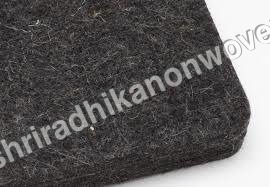Product Description
Nonwoven felt is a type of textile material that is manufactured by bonding or entangling fibers together without the need for weaving or knitting. It is created by various processes such as needle punching, thermal bonding, or chemical bonding. Nonwoven felts have a wide range of applications due to their versatility, durability, and cost-effectiveness.
FAQ :
Q: What are the applications of nonwoven felt?
A: Nonwoven felt is utilized in numerous industries and applications. It is commonly used in filtration systems, including air and liquid filtration, due to its ability to trap and retain particles. It is also used in automotive interiors, carpet underlays, insulation materials, geotextiles, medical products, packaging, and many other applications.
Q: What are the advantages of nonwoven felt?
A: Nonwoven felt offers several advantages over traditional woven or knitted fabrics. It can be manufactured from a wide range of fibers, both natural and synthetic, allowing for flexibility in terms of properties and performance. Nonwoven felt is typically lightweight, breathable, and resistant to tearing. It also provides good insulation, sound absorption, and cushioning properties.
Q: How is nonwoven felt produced?
A: Nonwoven felt can be produced using different methods. One common method is needle punching, where barbed needles mechanically interlock the fibers together. Thermal bonding involves using heat to melt or soften the fibers, which then bond upon cooling. Chemical bonding involves using adhesive or bonding agents to join the fibers.
Q: Is nonwoven felt biodegradable or recyclable?
A: The biodegradability or recyclability of nonwoven felt depends on the type of fibers used. Natural fibers like wool or cotton are biodegradable and can break down in the environment over time. Some synthetic fibers used in nonwoven felt, such as polyester, can be recycled into new products. However, it's important to check the specific composition of the felt and consult recycling guidelines in your area.




